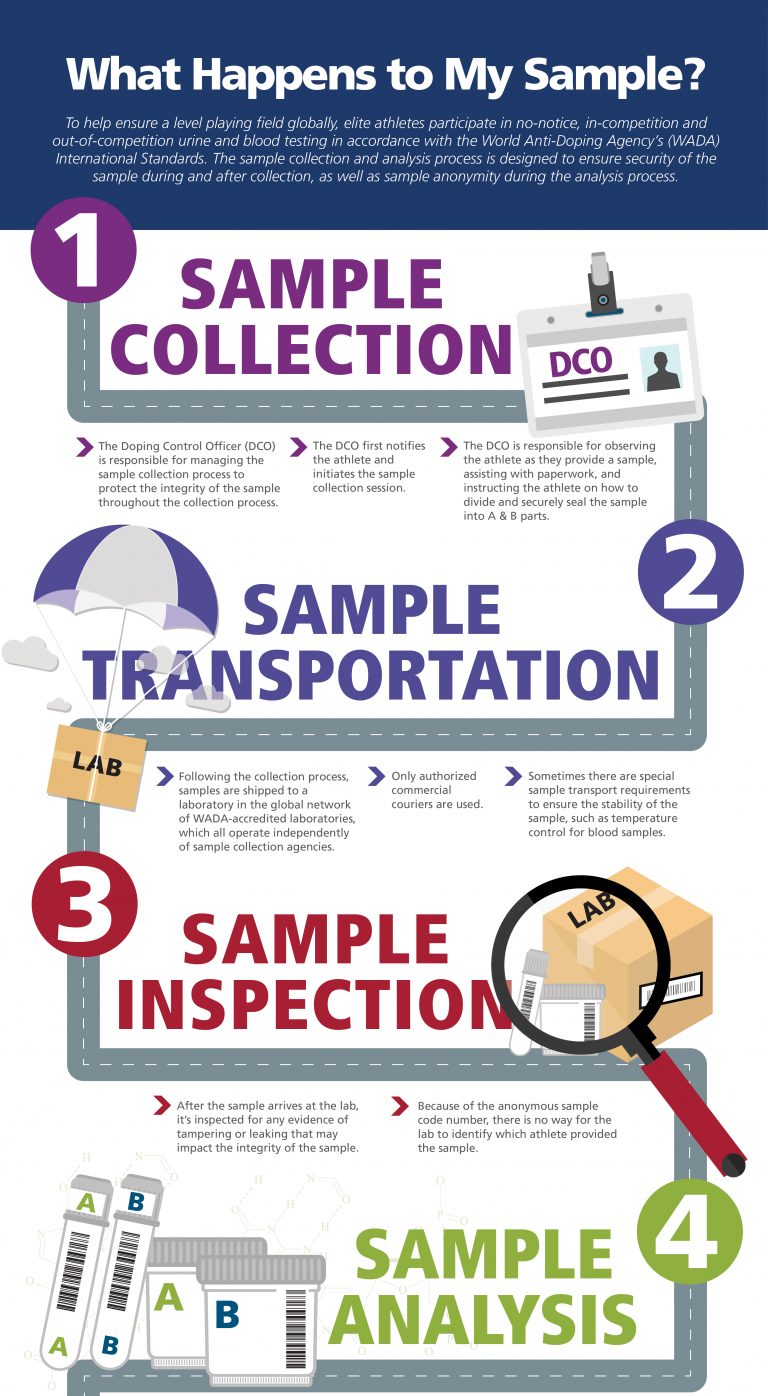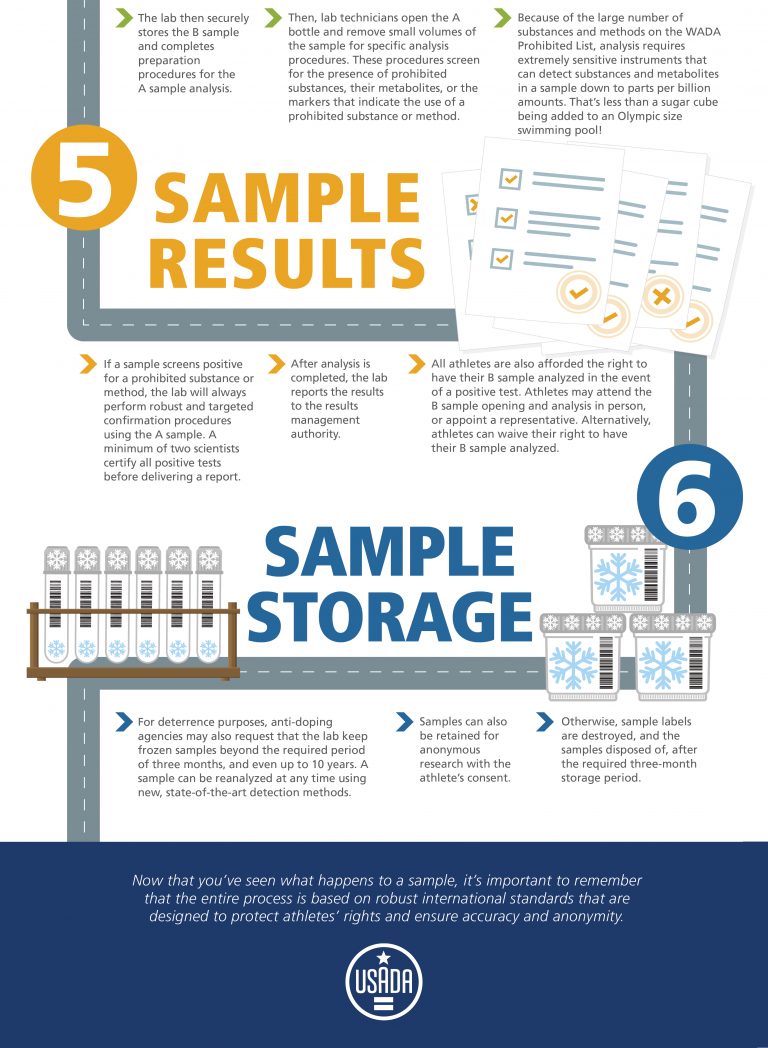
To help ensure a level-playing field globally, elite athletes participate in no-notice, in-competition and out-of-competition urine, blood, and dried blood spot testing in accordance with the World Anti-Doping Agency’s (WADA) International Standards. The sample collection and analysis process is designed to ensure security of the sample during and after collection, as well as sample anonymity during the analysis process.
Explore the six-step journey of a sample, from collection to storage.




